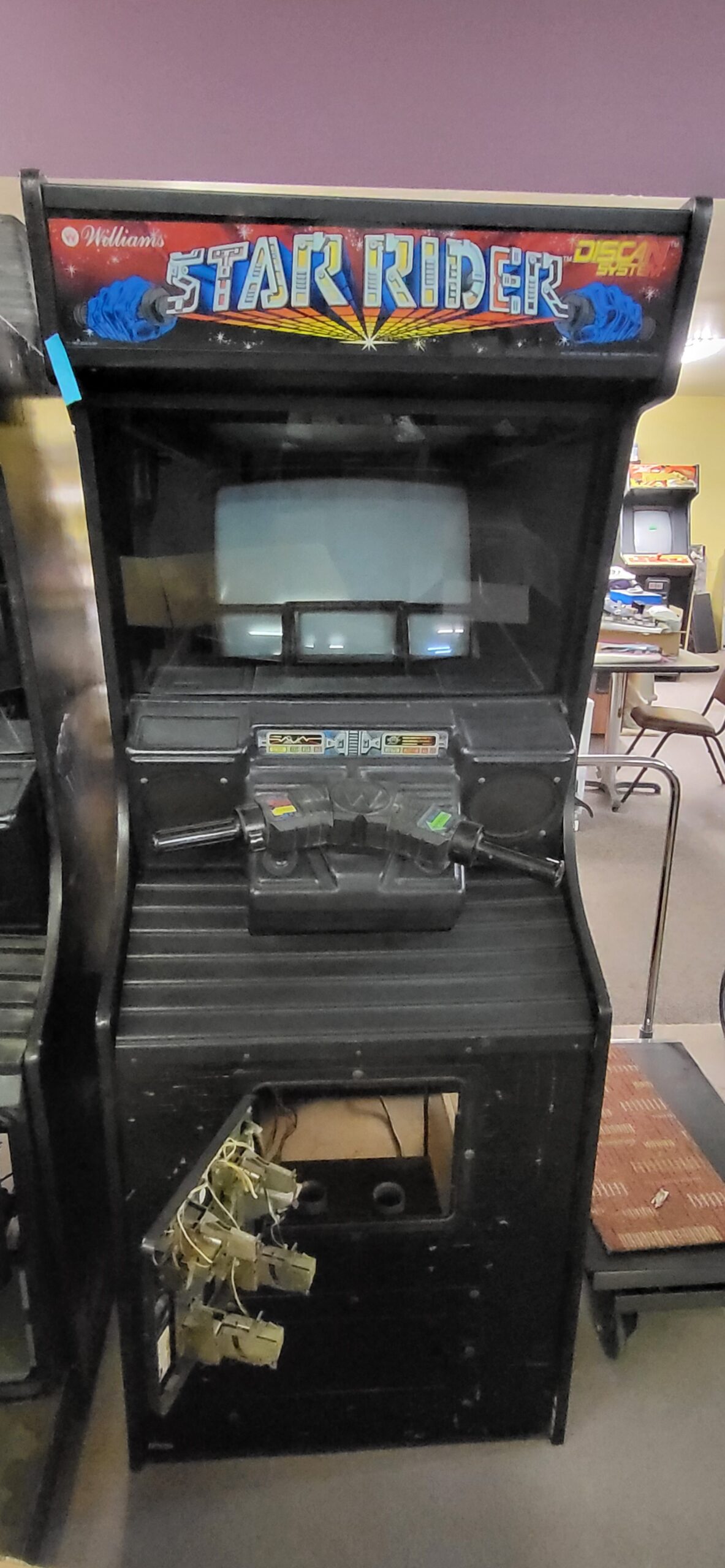
Star Rider
Arcade / Williams 1983
Star Rider is a futuristic arcade game developed by Williams Electronics and released in 1983. Set in a dystopian future, the game puts players in control of a high-speed motorcycle as they race through various levels filled with obstacles and enemies. The game is notable for its use of laserdisc technology, which provided pre-rendered backgrounds and smooth animation, creating an immersive experience that was ahead of its time.
The development of Star Rider began in the early 1980s, during a period when Williams Electronics was experimenting with innovative technologies to push the boundaries of arcade gaming. The use of laserdisc technology allowed for high-quality video playback, which was a significant leap from the pixelated graphics common in other games of the era. The game was directed by Larry DeMar, a notable figure in the arcade industry, and featured contributions from other Williams’ talents. Despite its advanced technology and ambitious design, the game faced numerous technical challenges, including issues with the laserdisc player reliability, which hampered its success in the arcade market.
Upon its release, Star Rider received mixed reviews. Critics praised its groundbreaking graphics and innovative use of laserdisc technology but were often critical of its gameplay, which some found to be less engaging than other contemporary arcade titles. The game’s difficulty and the unreliable nature of the laserdisc player also contributed to its lukewarm reception. Over time, however, Star Rider has gained a cult following among retro gaming enthusiasts who appreciate its unique place in arcade history.
Star Rider did not see any direct sequels or significant variations. However, its use of laserdisc technology and the concept of integrating video playback into gameplay influenced other arcade titles and home console games in the years that followed. Games like Dragon’s Lair and Space Ace, which also utilized laserdisc technology, owe some of their conceptual groundwork to the innovations seen in Star Rider.
Star Rider is considered a rare and valuable collector’s item in the arcade game community. It is estimated that fewer than 1,000 units were produced, and even fewer have survived to the present day in working condition. Due to its rarity and the technical challenges involved in maintaining the laserdisc system, a fully operational Star Rider machine can fetch between $5,000 to $10,000 or more at auctions and among private collectors, depending on its condition and completeness.
Star Rider’s hardware is a complex combination of custom arcade components and consumer-grade laserdisc technology. The main cabinet features a specialized control panel with a unique handlebar controller, a CRT monitor for display, and a Pioneer LD-V1000 laserdisc player for video playback. Key components and their potential replacements include:
Control Panel: Handlebar controller and buttons, which can be replaced with compatible arcade parts.
Monitor: 19-inch CRT monitor, replaceable with other arcade CRT monitors or modern LCD alternatives with proper converters.
Laserdisc Player: Pioneer LD-V1000, often requiring specialized repair or replacement with other compatible laserdisc players.
Power Supply: Standard arcade power supply units.
PCB (Printed Circuit Board): Custom Williams electronics, which may require repair by specialists or replacement with parts from other Williams machines.
Speakers: Standard arcade speakers, replaceable with modern equivalents.
Maintaining and repairing Star Rider requires a mix of sourcing original components and adapting modern replacements to keep the machine operational. Enthusiasts often rely on dedicated arcade repair forums and communities to find and share resources for preserving this unique piece of gaming history.


